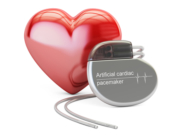The National Highway Traffic Safety Administration (NHTSA) partnered with more than 100 organizations to study the problem of drowsy driving. They just released their report, “Asleep at the Wheel: A National Compendium of Efforts to Eliminate Drowsy Driving.”
Americans are notoriously sleep-deprived. And we love our vehicles. This is a dangerous combination, but the NHTSA offers some solutions.
What can be done about drowsy driving?
The NHTSA offers several suggestions in “Asleep at the Wheel”:
- Researchers need to develop new ways to detect when someone is fatigued and sleep-deprived, using biomarkers.
- Corporations and high-risk professions, such as public safety agencies, should create fatigue risk management programs.
- Legislatures need to consider tweaking teen driver laws to target drowsy driving.
- Public and private organizations should increase public awareness of the problem.
- Vehicle technology needs to improve in the areas of detecting drowsiness and alerting drivers, as well as in technology that helps avoid collisions.
How is the NHTSA getting the word out about drowsy driving?
Numerous public awareness events are scheduled across the U.S. to educate the public and make people aware of the problem of drowsy driving. Public service announcements, brochures, and other materials are being distributed. Other means of educating the public of distracted driving include:
- Doctors should tell their patients about drowsy driving.
- Colleges should education students of the danger of driving while fatigued.
- Even the Food and Drug Administration (FDA) is part of the NHTSA’s campaign, funding research to reduce adverse events in drugs.
Do crash avoidance systems prevent drowsy driving wrecks?
Vehicles equipped with forward collision warning systems reduce the number of rear end crashes reported to the police by 27 percent, according to the NHTSA’s report. In vehicles with both the forward collision warning systems and automatic braking, crashes are cut in half.
The lesson learned is that the technology will not prevent all crashes. People should not buy a car that comes equipped with this technology and think they no longer have to pay attention while driving.
How many people are killed in drowsy driving-related crashes?
At least 6,000 people a year are killed in crashes in the United States because of drowsy driving, reports the NHTSA. That is about one person every waking hour, 7 days a week, 365 days a year. Drowsy driving causes over 72,000 crashes a year reported to the police. That comes to nearly 200 crashes every day.
But I drive drowsy because I have to get to work.
Much of drowsy driving is work-related. People may struggle to get enough sleep (whether because of a late shift, staying up late with friends, or attending to a sick child), but have to get up anyway and go to work. The NHTSA is encouraging employers to develop better fatigue guidelines as part of risk management.
Are there laws against drowsy driving?
Only in Arkansas and New Jersey. The NHTSA is urging the other states to pass legislation that addresses the problem of drowsy driving, especially laws targeted at teen drivers. Although 47 states and the District of Columbia address the issue of drowsy driving in their driver’s education materials, some of these materials are excellent, while other materials are inadequate.
If you are injured in an accident caused by a drowsy driver, call the Montero Law Center at 954-767-6500 today for help getting compensation.
 English
English  Español
Español 

